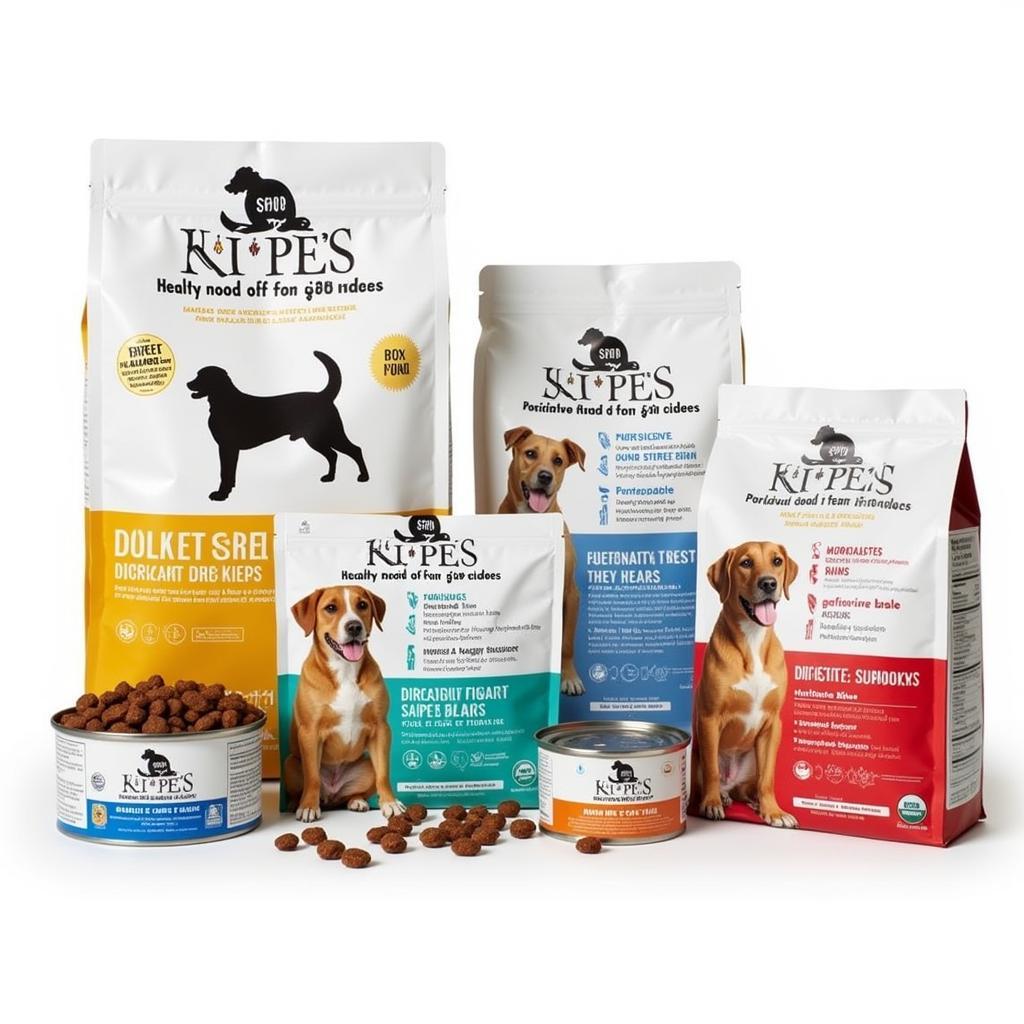Spd Dog Food, short for Specific Purpose Diet, is specially formulated to address specific health needs or conditions in dogs. These diets can be a crucial part of managing a dog’s health, offering tailored nutrition to support various ailments. From sensitive stomachs to joint issues, SPD dog food provides targeted solutions for a healthier, happier canine companion.
What is SPD Dog Food and Why Is It Important?
SPD dog food goes beyond basic nutrition. These specialized formulas target specific health issues such as allergies, digestive problems, joint pain, urinary tract health, and even weight management. While regular dog food aims to provide general well-being, SPD dog food offers a precise nutritional profile designed to mitigate the symptoms and support the management of specific health challenges. Veterinarians often recommend SPD dog food as part of a comprehensive treatment plan, making it an essential element in a dog’s recovery and ongoing well-being.
 Various Types of SPD Dog Food
Various Types of SPD Dog Food
Common Types of SPD Dog Food
There are various types of SPD dog food, each designed for a specific purpose. Some common examples include:
- Limited Ingredient Diets: These formulas contain a limited number of ingredients, making them ideal for dogs with food sensitivities or allergies.
- Hydrolyzed Protein Diets: These diets break down proteins into smaller pieces, making them less likely to trigger allergic reactions.
- Joint Support Diets: Formulated with ingredients like glucosamine and chondroitin to support joint health and mobility, particularly beneficial for older dogs or those with arthritis.
- Urinary Health Diets: These formulas help manage urinary tract infections and prevent the formation of bladder stones.
- Weight Management Diets: These lower-calorie options help overweight dogs shed extra pounds and maintain a healthy weight.
Choosing the Right SPD Dog Food for Your Dog
Selecting the appropriate SPD dog food is crucial for your dog’s health. Always consult with your veterinarian before switching to a new diet, especially an SPD. They can assess your dog’s specific needs and recommend the best option based on their health condition, age, breed, and lifestyle.
Factors to consider when choosing SPD dog food include:
- Ingredients: Look for high-quality ingredients and avoid fillers, artificial colors, and flavors.
- Specific Health Condition: Ensure the food is formulated for your dog’s particular health issue.
- Life Stage: Consider your dog’s age and life stage, as puppies, adults, and seniors have different nutritional requirements.
- Palatability: Choose a food that your dog enjoys eating, as even the most nutritious diet won’t help if your dog refuses to eat it.
How to Transition Your Dog to SPD Dog Food
Introducing a new diet should be gradual to prevent digestive upset. Start by mixing a small amount of the new SPD food with your dog’s current food. Gradually increase the proportion of SPD food over several days until your dog is eating only the new diet. Monitor your dog closely for any signs of digestive issues or allergic reactions during the transition.
“A gradual transition is key to minimizing digestive upset when switching to a new diet, especially an SPD,” says Dr. Emily Carter, DVM, a veterinary nutritionist with over 15 years of experience. “This allows the dog’s digestive system to adapt to the new food and minimizes the risk of adverse reactions.”
Conclusion
SPD dog food offers a tailored nutritional approach to managing specific health conditions in dogs. By working closely with your veterinarian and choosing the right formula, you can provide your furry friend with the targeted nutrition they need to thrive. Remember, a proper diet is a cornerstone of good health and happiness for your canine companion. Consult with your veterinarian if you have any questions about SPD dog food or your dog’s dietary needs.
FAQ
- What does SPD stand for in dog food? SPD stands for Specific Purpose Diet.
- Is SPD dog food only for sick dogs? Not necessarily. SPD food can also be used preventatively for certain conditions.
- How do I know if my dog needs SPD food? Consult with your veterinarian for a diagnosis and recommendation.
- Can I switch my dog’s SPD food without consulting a vet? It’s best to consult your vet before making any dietary changes.
- Are all SPD dog foods expensive? Prices vary depending on the brand and ingredients.
- What if my dog doesn’t like the taste of the SPD food? Try different flavors or brands with your vet’s guidance.
- How long should my dog stay on SPD food? This depends on the individual dog and their specific health condition. Your vet will advise you on the appropriate duration.
Need more support? Contact us at Phone Number: 02437655121, Email: [email protected] or visit our location at 3PGH+8R9, ĐT70A, thôn Trung, Bắc Từ Liêm, Hà Nội, Việt Nam. We have a 24/7 customer service team available to assist you. Check out our other helpful articles on dog nutrition and health on our website.